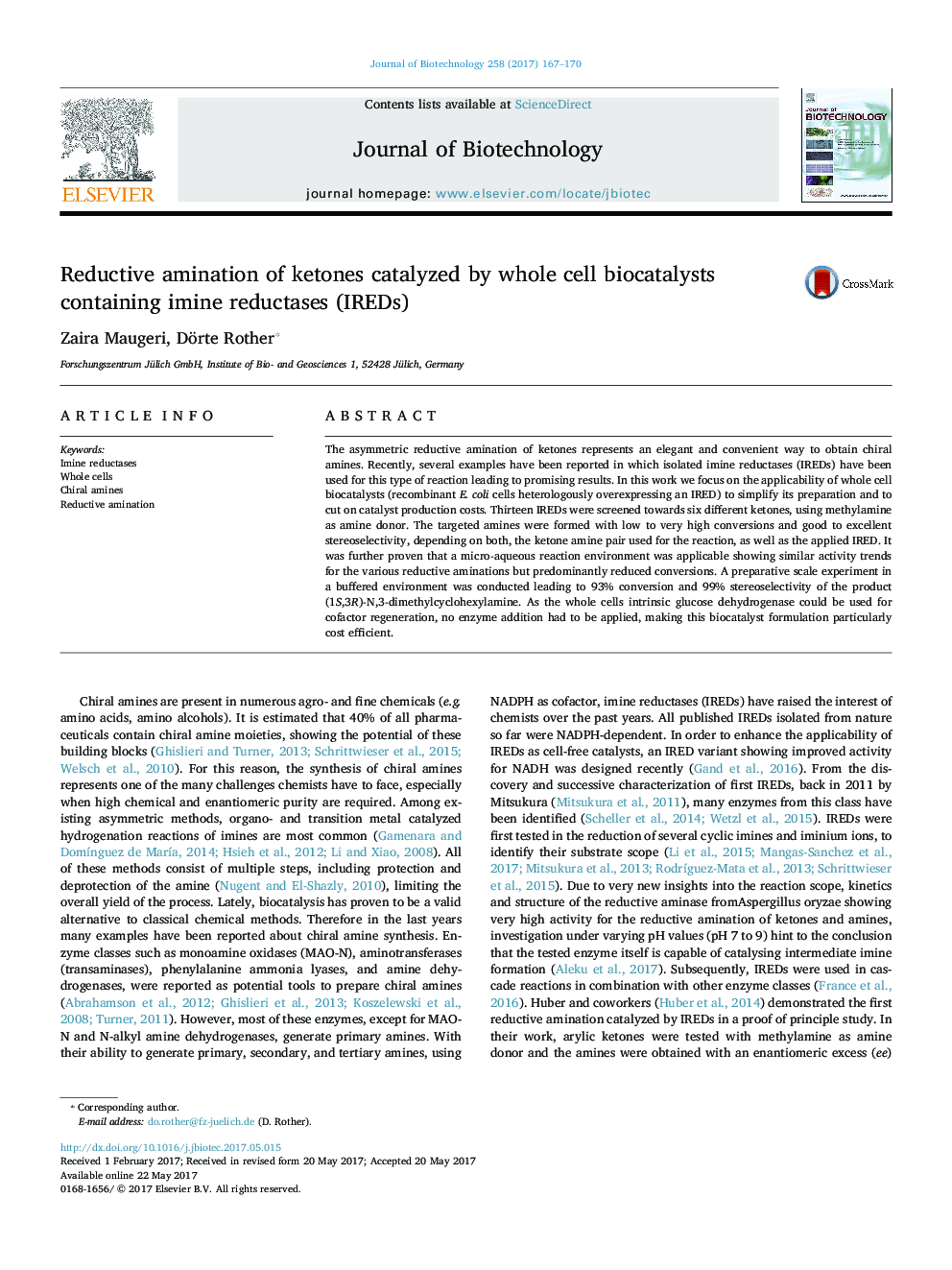| Article ID | Journal | Published Year | Pages | File Type |
|---|---|---|---|---|
| 6452049 | Journal of Biotechnology | 2017 | 4 Pages |
â¢Enzymatic reductive aminations are possible using whole (lyophilized) cells.â¢(1S,3R)-N,3-dimethylcyclohexylamine produced with excellent conversion & selectivity.â¢Big potential of enzymatic reductive aminations for chiral amine synthesis.â¢Whole cells intrinsic glucose dehydrogenase used for cofactor regeneration.
The asymmetric reductive amination of ketones represents an elegant and convenient way to obtain chiral amines. Recently, several examples have been reported in which isolated imine reductases (IREDs) have been used for this type of reaction leading to promising results. In this work we focus on the applicability of whole cell biocatalysts (recombinant E. coli cells heterologously overexpressing an IRED) to simplify its preparation and to cut on catalyst production costs. Thirteen IREDs were screened towards six different ketones, using methylamine as amine donor. The targeted amines were formed with low to very high conversions and good to excellent stereoselectivity, depending on both, the ketone amine pair used for the reaction, as well as the applied IRED. It was further proven that a micro-aqueous reaction environment was applicable showing similar activity trends for the various reductive aminations but predominantly reduced conversions. A preparative scale experiment in a buffered environment was conducted leading to 93% conversion and 99% stereoselectivity of the product (1S,3R)-N,3-dimethylcyclohexylamine. As the whole cells intrinsic glucose dehydrogenase could be used for cofactor regeneration, no enzyme addition had to be applied, making this biocatalyst formulation particularly cost efficient.
